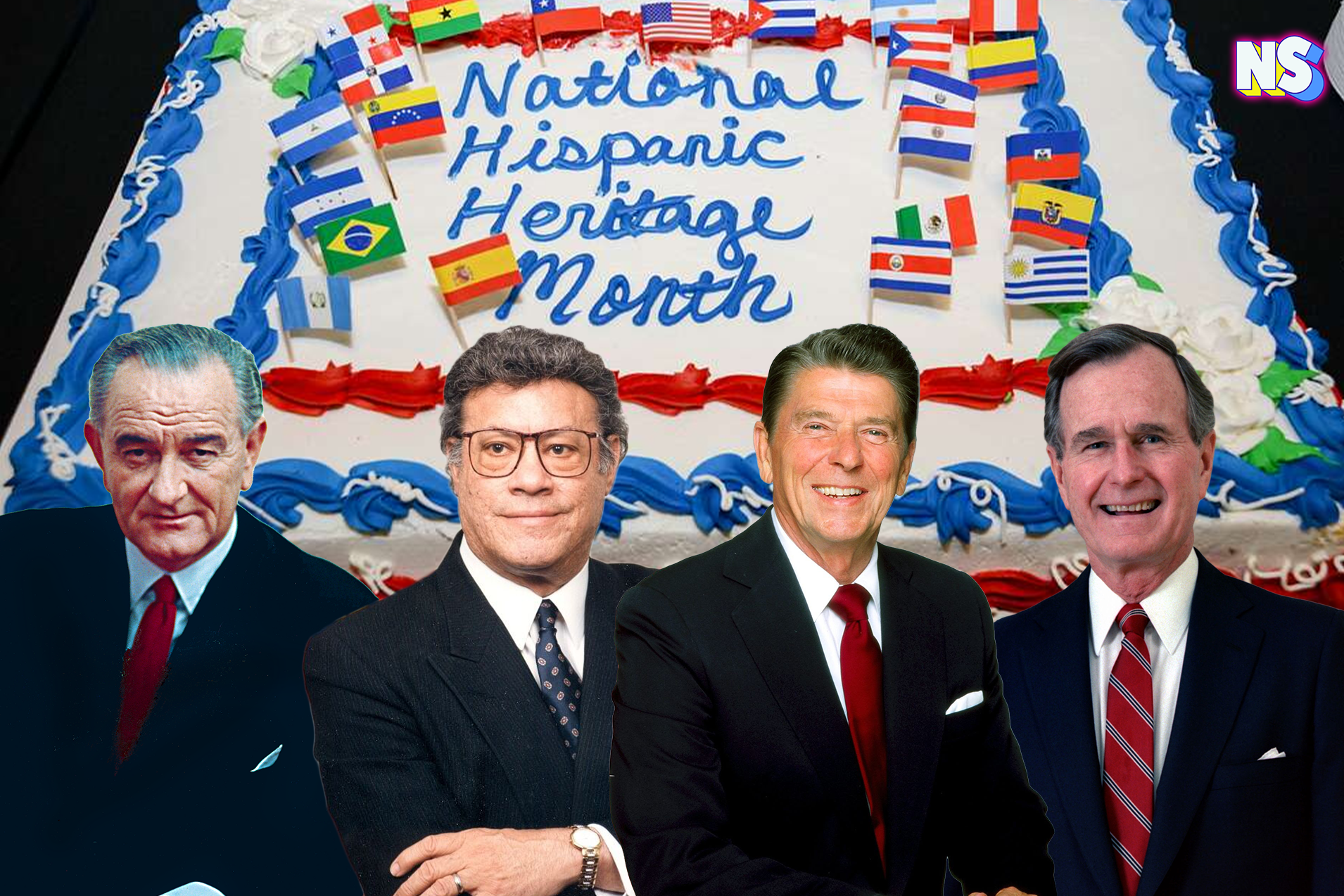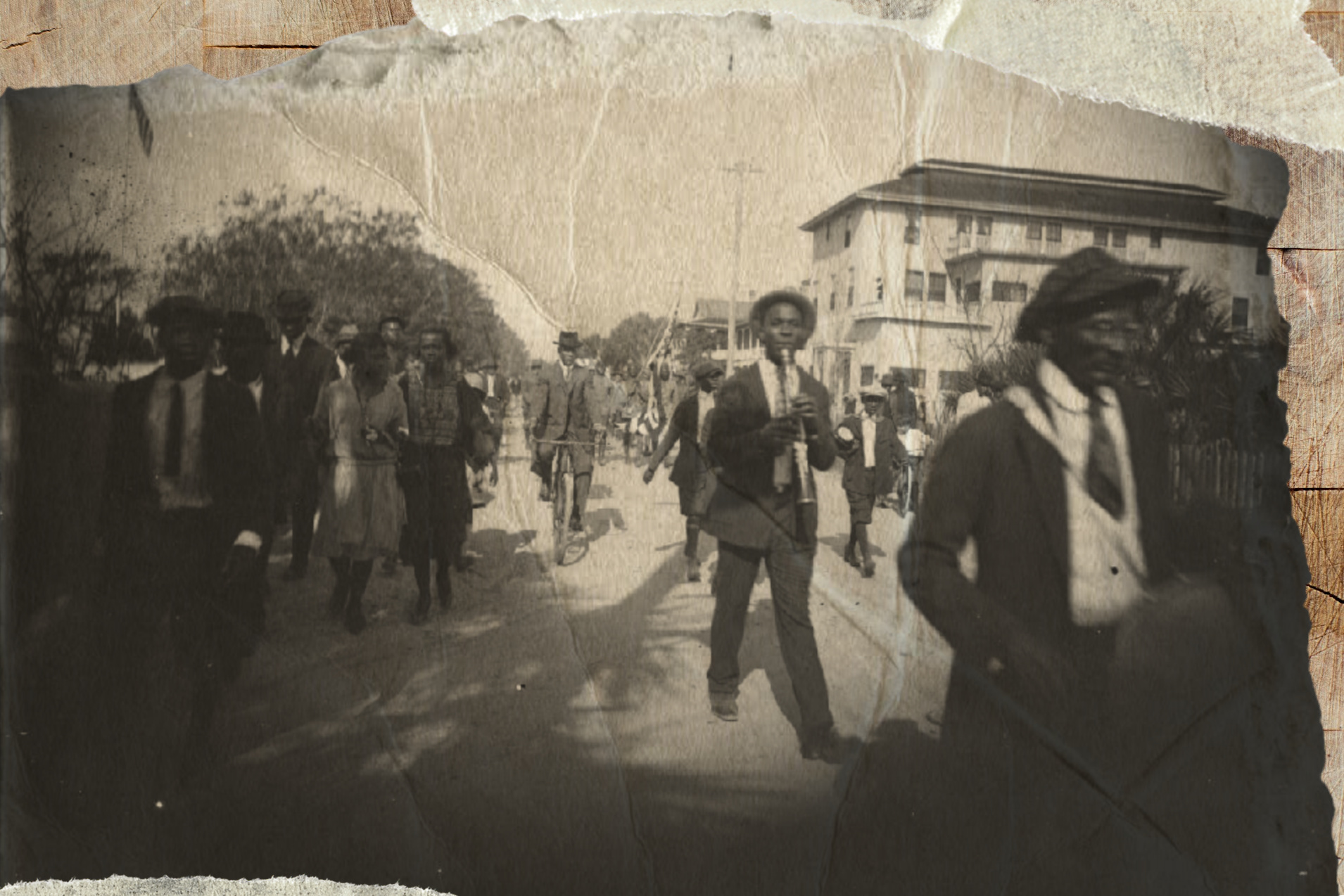Illustration by Nuestro Stories
Yep, it’s early September, and we’re here again: Hispanic Heritage Month.
Of course, there’s nothing wrong with a half month of September and October, (Sept. 15-Oct. 15) that annually celebrates the contributions, cultures, and histories of the American Latinos, or Hispanics, because we’ve surely more than earned it, right?
Today, salsa is more popular than ketchup. Tortillas are as popular as sliced bread. Quinceañeras are as popular as Sweet Sixteens. And what are birthday parties without piñatas?
But did you know this month started out as a week? And do you know why our month is split into two?
Yep, this calls for a special Nuestro Stories deep dive into Hispanic Heritage Month. Or, wait, did we mean Latino History Month?
The Week that turned into a Month
Hispanic Heritage Month goes all the way back to 1968 when it was initially established as a just a week-long celebration.
President Lyndon B. Johnson proclaimed the first Hispanic Heritage Week, which took place from September 15 to September 21. Then, in 1987 U.S. Representative Esteban E. Torres of California, wanting more time for the nation to learn and observe the culture, asked for the week to grow to 31 days.
So, in 1988, President Ronald Reagan expanded the observance to a month-long celebration, officially changing the name to “National Hispanic Heritage Month.”
Then, in 1989, President George H.W. Bush became the first president to declare the period from Sept. 15 to Oct. 15 as National Hispanic Heritage Month.
As odd as it seems for many, the start of the celebrations runs from September 15 through October 15 for a reason: the first date marks the anniversary of independence for several Latin American countries, including Costa Rica, El Salvador, Guatemala, Honduras, and Nicaragua. Mexico’s independence day falls on September 16, and Chile’s on September 18.
Hispanic Heritage Month officially ends on October 15, to October 12, aka Columbus Day in the United States, and as el Día de la Raza (Day of the Race) in many Latin American countries. It commemorates Christopher Columbus’s arrival in the Americas.
Today, the observance aims to recognize and honor the achievements and contributions of Hispanic and Latino Americans in various fields, such as politics, sports, literature, science, and the arts – with events like parades, festivals, art exhibitions, music performances, educational programs, and more popping up all over the country.
Today (unlike just 20 years ago) the Library of Congress, National Archives and Records Administration, National Endowment for the Humanities, National Gallery of Art, National Park Service, Smithsonian Institution and United States Holocaust Memorial Museum all join in their own ways to “…paying tribute to the generations of Hispanic Americans who have positively influenced and enriched our nation and society.”
There’s even an official U.S. website with images, videos and even teacher’s guides to mark HHM (that’s Hispanic Heritage Month, for short): https://www.hispanicheritagemonth.gov/.
It’s Not Latino Heritage Month, ChatGPT!
Not to be left behind, AI already has its opinion about HHM. A query to ChatGPT, for example, claims that Latino Heritage Month is an alternate way to say Hispanic Heritage Month. Surprise, surprise. But ChatGPT is wrong, and that error even draws the ire of National Public Radio.
It’s “Not Latino Heritage Month. Not Latinx Heritage Month. Not even a compromise or a combination of the three: Hispanic/Latino/Latinx Heritage Month,” NPR explains in an article about HHM.
Hispanic vs. Latino vs. We Give Up!
Which leads us back to another rabbit hole debate that is always raging: Which term to use to best identify American Latinos, or did we mean Hispanics, or Latinos or … you get the picture?
The dilemma goes all the way back to the early 20th century thanks to the government agency set out to try to count our quickly growing population: the U.S. Census Bureau.
According to a study by the Pew Research Center, the term “Hispanic” was added to the U.S. Census Bureau to properly count a portion of the population once only referred to as “Mexican” (which sounds odd in today’s pronoun sensitive world).
“There was a one-time inclusion of a ‘Mexican’ race category in the 1930 Census, when forms were filled out by census-takers who went door to door,” the Pew Center says. “The first major attempt to estimate the size of the Hispanic population for the entire nation was in the 1970 Census, in which forms were completed by residents themselves.”
Noting the mistakes in its count, the agency reworded its questions in the 1970 Census with the new question asking: “Is this person’s origin or descent … “Mexican, Puerto Rican, Cuban, Central or South American, Other Spanish,” or “No, none of these.”
However, the question did not work very well and the population referred to as Hispanics were not counted appropriately, with only 9.1 million people chiming in – about 500,000 less than what was anticipated.
In 1980, the term “Hispanic” was added to the Census, with the following options: “No (not Spanish/Hispanic); Yes, Mexican, Mexican-Amer., Chicano; Yes, Puerto Rican; Yes, Cuban; Yes, other Spanish/Hispanic.”
This Census was considered a success with just over 14 million respondents making up the Hispanic population, even though many respondents were reportedly confused with the “American” portion of the “Mexican-Amer.” response.
By the 2000 Census, the 1980 wording was almost identical but the term “Latino” was added, counting more than 35 million Hispanics in the U.S.
With a big marketing push asking the minority population to help count its numbers, the 2010 Census added the term “origin” with the question asking whether the person is “of Hispanic, Latino, or Spanish origin.” This revealed even more than 30 million members of the U.S. Hispanic population.
Latino? Hispanic? Latinx? Latine?
The term “Hispanic” has garnered much controversy over the years, with Author Sanda Cisneros being one of its most notable critics. “People who use that word don’t know why they’re using it,” Cisneros, a Mexican American poet and novelist told the Washington Post in 2003. “To me, it’s like a slave name. I’m a Latina.”
And she wasn’t alone.
In 2003, right after the Hispanics surpassed African Americans as the largest minority group in the country, another Mexican American writer, Luis J. Rodriguez, told the Washington Post he disliked the label simply stating: ” … I’m not Hispanic,” he said.
Cisneros, and others over the years, saw the term “Hispanic” as a label the U.S. government created to label a diverse group of people who were not asked what they wanted to be called.
“Hispanic was never a term that everybody loved, but it was a term that got a lot of support from within Latinos in the Nixon and, later, the Ford administration,” Cristina Mora, a sociologist at the University of California, Berkeley, told NPR.
To clarify the confusion between terms, the 2003 Washington Post article “Latinos or Hispanics? A Debate About Identity” gave this explanation: “Hispanics derive from the mostly white Iberian peninsula that includes Spain and Portugal, while Latinos are descended from the brown indigenous Indians of the Americas south of the United States and in the Caribbean, conquered by Spain centuries ago.”
Today, 20 years later, the difference between “Latino” and “Hispanic” is still up for debate, with the term “Latinx” gaining more popularity. The roots of the word itself are unknown, but, according to the University of Colorado, it first appeared on the internet in 2004, as a gender neutral term created in the Latino queer community.
Then there’s the term “Latine” which is also a gender-neutral form of the word Latino, like Latinx, and “created by gender non-binary and feminist communities in Spanish-speaking countries,” the University of Colorado explains.
The Biden Administration is reportedly already preparing for the 2030 census, proposing “that each citizen can define their ethnicity as Hispanic or Latino ahead of the next census,” according to a recent article in Bloomberg Linea. A “Hispanic or Latino” box is also being proposed under a reformatted question to identify a person’s race or ethnicity.
As of now, no changes have been proposed to alter the name of the month celebrating a community representing over 20 countries and millions of American dreams.
Happy Hispanic Heritage Month to all!





